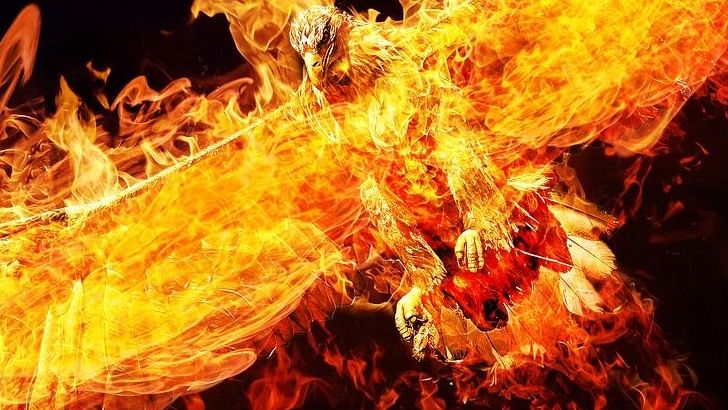The Weight of a Nation’s Survival on One Man’s Shoulders

Picture this: you wake up one morning to find your country literally tearing itself apart, brother fighting brother, and the very idea of America hanging by a thread. Decades of controversy over slavery came to a head when Abraham Lincoln, who opposed slavery’s expansion, won the 1860 presidential election. Seven Southern slave states responded to Lincoln’s victory by seceding from the United States and forming the Confederacy. That’s exactly what Abraham Lincoln faced when he took office in 1861. The man from Illinois found himself at the helm of a republic that was literally dissolving before his eyes. The war began on April 12, 1861, when the Confederacy bombarded Fort Sumter in South Carolina. A wave of enthusiasm for war swept over the North and South, as military recruitment soared. Lincoln had no manual for this, no precedent to follow – just his own judgment and the Constitution as his guide.
Learning Leadership Under Fire

Lincoln offers many lessons for wartime presidents, but he himself had to learn as he went. While Bush could look back to Franklin Delano Roosevelt and Lincoln, and while FDR could look back to Lincoln, Lincoln himself had no precedents to which to turn. Think about that for a moment – Lincoln was writing the playbook on wartime leadership as cannons roared and soldiers died. Entering uncharted waters as he confronted the rebellion, Lincoln claimed broad emergency powers that he argued the Constitution had vested in the executive branch. He called out the militia, authorized increases in the size of the regular army and navy, expended funds for military purchases, deployed military forces, blockaded Southern ports, suspended the writ of habeas corpus in certain areas, authorized arbitrary arrests, and empanelled military tribunals to try civilians in occupied or contested areas. He made decisions that would’ve made constitutional scholars’ heads spin, all while the clock was ticking and the Union was bleeding.
The Man Who Had to Choose Between Freedom and Unity

Lincoln addressed the dilemma a president faces in time of emergency in his speech to a special session of Congress after Fort Sumter. “Is there,” he asked, “in all republics, this inherent, and fatal weakness? Must a government, of necessity, be too strong for the liberties of its own people, or too weak to maintain its own existence?” Here was Lincoln’s central challenge: how do you save a democracy without destroying the very principles that make it worth saving? The most controversial element of Lincoln’s war presidency is his treatment of civil liberties. Even many defenders of Lincoln argue that he overstepped constitutional bounds by declaring martial laws, arbitrarily arresting civilians and trying them by military tribunal, and shutting down opposition newspapers. But Lincoln believed that sometimes you have to bend the rules to save the game itself.
The Bloodiest War America Had Ever Seen

The numbers from Lincoln’s war are absolutely staggering. There were an estimated 1.5 million casualties reported during the Civil War. Roughly 2% of the population, an estimated 620,000 men, lost their lives in the line of duty. To put that in perspective, taken as percentage of today’s population, the toll would have risen as high as 6 million souls. In terms of the number of deaths per day, the American Civil War is still at the top, with an average of 425 deaths per day, while the First and Second World Wars have averages of roughly 100 and 200 fatalities per day respectively. Every single day Lincoln woke up knowing that hundreds of Americans would die because of his decisions. Recent research from 2024 suggests the death toll was even higher than previously thought, with newer estimates putting the number at about 750,000 or about 20% higher than previously approximated.
The General Who Taught Himself Strategy

As a war leader, Lincoln employed the style that had served him as a politician—a description of himself, incidentally, that he was not ashamed to accept. He preferred to react to problems and to the circumstances that others had created rather than to originate policies and lay out long-range designs. But don’t mistake this for weakness – Lincoln was learning military strategy on the job and getting good at it fast. Although Lincoln had no formal military education, he learned quickly and proved to be a competent strategist. He intuitively adhered to the old adage that in war, “the main thing is to make sure that the main thing remains the main thing.” The “main thing” for Lincoln was to preserve the Union. From 1861 to 1864, while hesitating to impose his ideas upon his generals, Lincoln experimented with command personnel and organization. Accepting the resignation of Scott (November 1861), he put George B. McClellan in charge of the armies as a whole. After a few months, disgusted by the slowness of McClellan (“He has the slows,” as Lincoln put it), he demoted him to the command of the Army of the Potomac alone.
Building a War Machine From Scratch

Thus Lincoln pioneered in the creation of a high command, an organization for amassing all the energies and resources of a people in the grand strategy of total war. He combined statecraft and the overall direction of armies with an effectiveness that increased year by year. Lincoln wasn’t just running a war; he was inventing modern warfare itself. A testament to the accelerating Industrial Revolution, the American Civil War produced and imported materiel at a rate and scope barely imaginable a generation before. The following sums of firearms and edged weapons alone provide stark evidence to the phenomenon of mass production and its capacities. The war cost so much that rising costs forced the Lincoln administration to form the first national income tax in U.S. history (August 5, 1861). Lincoln was essentially funding America’s first modern war economy.
The Emancipation Gamble

Here’s where Lincoln made perhaps his boldest leadership move. On July 22, 1862, President Abraham Lincoln informs his chief advisors and cabinet that he will issue a proclamation to free enslaved people, but adds that he will wait until the Union Army has achieved a substantial military victory to make the announcement. This wasn’t just about doing the right thing – it was a calculated strategic decision. The issuing of the Emancipation Proclamation had less to do with ending slavery than saving the crumbling union. In an August 1862 letter to New York Tribune editor Horace Greeley, Lincoln confessed “my paramount object in this struggle is to save the Union, and it is not either to save or to destroy slavery.” When President Lincoln first proposed the Emancipation Proclamation to his cabinet in the summer of 1862, many of the cabinet secretaries were apathetic, or worse, worried that the Proclamation was too radical. It was only Lincoln’s firm commitment to the necessity and justice of the Proclamation, along with the victory at Antietam, which finally persuaded his cabinet members to support him.
Timing is Everything in War and Politics

On July 22, Lincoln presented it to his entire cabinet as something he had determined to do and he asked their opinion on wording. Although Secretary of War Edwin Stanton supported it, Seward advised Lincoln to issue the proclamation after a major Union victory, or else it would appear as if the Union was giving “its last shriek of retreat”. Lincoln understood that perception matters as much as reality in wartime leadership. The Battle of Antietam (also known as Sharpsburg) provided the necessary Union victory to issue the Emancipation Proclamation. Although the Battle of Antietam resulted in a draw, the Union army was able to drive the Confederates out of Maryland – enough of a “victory,” that Lincoln felt comfortable issuing the Emancipation just five days later. While the Battle of Antietam was not quite the decisive Union triumph Lincoln hoped for, Lee’s retreat was victory enough for Lincoln to issue the emancipation proclamation on which he had continued to labor since July.
Turning Moral Authority Into Military Advantage

Although the Emancipation Proclamation did not end slavery in the nation, it captured the hearts and imagination of millions of Americans and fundamentally transformed the character of the war. After January 1, 1863, every advance of federal troops expanded the domain of freedom. Moreover, the Proclamation announced the acceptance of black men into the Union Army and Navy, enabling the liberated to become liberators. Lincoln turned a war to preserve the Union into a crusade for human freedom, and the results were immediate. By the end of the war, almost 200,000 black soldiers and sailors had fought for the Union and freedom. That’s like adding an entire new army to your forces while weakening your enemy’s labor force. To this invitation to join the army Black men responded in considerable numbers, nearly 180,000 of them enlisting during the remainder of the war. By August 26, 1863, Lincoln could report, in a letter to James C. Conkling, that “the emancipation policy, and the use of colored troops, constitute the heaviest blow yet dealt to the rebellion.”
Fighting Two Wars at Once: Domestic and International

Britain and France had considered supporting the Confederacy in order to expand their influence in the Western Hemisphere. However, many Europeans were against slavery. Although some in the United Kingdom saw the Emancipation Proclamation as overly limited and reckless, Lincoln’s directive reinforced the shift of the international political mood against intervention while the Union victory at Antietam further disturbed those who didn’t want to intervene on the side of a lost cause. Lincoln was playing chess on multiple boards simultaneously – keeping European powers out of the war while managing domestic politics and military strategy. The international response was overwhelmingly positive. As Henry Adams noted, “The Emancipation Proclamation has done more for us than all our former victories and all our diplomacy.” In Italy, Giuseppe Garibaldi hailed Lincoln as “the heir of the aspirations of John Brown”. On August 6, 1863, Garibaldi wrote to Lincoln: “Posterity will call you the great emancipator, a more enviable title than any crown could be, and greater than any merely mundane treasure”.
Managing Generals, Cabinet, and Congress

In recent years, however, historians have begun to give Lincoln more credit as a war leader, pointing out that he was responsible for establishing Union policy and developing and implementing a strategy to achieve the goals of his policy. He skillfully managed his cabinet, generals, and even Congress. He did not hesitate to overrule his advisers, both military and civilian. He had to make the decisions that translated the North’s advantages into military and political success. Lincoln didn’t just give orders; he was constantly juggling egos, politics, and military necessities. His achievement is all the more remarkable in view of his lack of training and experience in the art of warfare. This lack may have been an advantage as well as a handicap. Unhampered by outworn military dogma, Lincoln could all the better apply his practical insight and common sense—some would say his military genius—to the winning of the Civil War. Sometimes being an outsider gives you the fresh perspective that experts miss.
The Ultimate Test of Democracy

The human cost of the Civil War was beyond anybody’s expectations. The young nation experienced bloodshed of a magnitude that has not been equaled since by any other American conflict. Lincoln held the country together during its darkest hour when everything seemed to be falling apart. The difference in death tolls across regions demonstrates powerfully how much deadlier the Civil War was for the Confederacy than the Union. Although the core of the Confederacy had fewer than one-third as many military-age NBWM as the core of the Union, states at the core of the Confederacy suffered almost as many casualties (192,160 deaths in the Old South vs. 229,803 in the Old North). This translates into an excess mortality rate of 13% in the Confederacy against only 5% in the Union. By the end, the fall of Atlanta on September 2, 1864, guaranteed the reelection of Lincoln. The people chose to stick with Lincoln even when the war seemed endless.
The Legacy of Leadership Under Pressure

Two months before the war ended—in February 1865—Lincoln told portrait painter Francis B. Carpenter that the Emancipation Proclamation was “the central act of my administration, and the greatest event of the nineteenth century.” Lincoln understood that he’d done something that would echo through history. The Emancipation Proclamation would become the focal point of Abraham Lincoln’s life and legacy, and it continues to be one of the seminal texts of American History. But his leadership went beyond any single document or decision. He proved that democracy could survive its greatest test, that a republic could endure even when it seemed to be tearing itself apart. Lincoln showed the world that sometimes the hardest leadership decisions are the ones that define not just your presidency, but your entire nation’s future.
What makes Lincoln’s leadership so remarkable isn’t just that he won the war – it’s that he managed to save democracy while fundamentally transforming it. He took a country that was half slave and half free and made it truly the land of liberty. Can you imagine the pressure of knowing that every decision you make could either save or destroy the American experiment?







